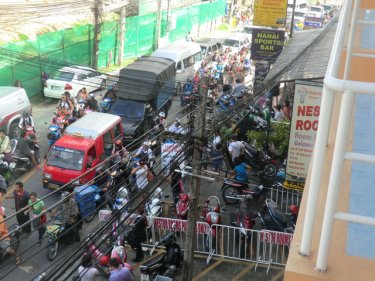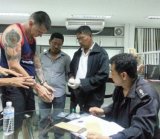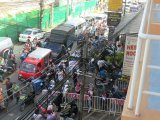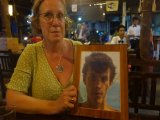The big wave practice drill, to be held in combination with Phang Nga, is set for May 29 and two days of talks about latest information on disasters.
Phuket Vice Governor Jamleran Tipayapongtada met with officials from the Department of Disaster Prevention and Mitigation yesterday in Phuket City to outline the event.
''Last year Phuket experienced a tsunami alert and for the first time an earthquake with its epicentre under the island,'' the vice governor said.
''We need to make sure we are prepared in future because the Andaman sits in an earthquake and tsunami zone.''
Phuket's name became closely associated with the December 26, 2004 tsunami but it was in Phang Nga, the province north of Phuket, that the big wave claimed most victims.
While the tsunami hit the first line of buildings along the west coast foreshore in Patong, in and around Khao Lak the wave increased in magnitude as it rose to more than nine metres and surged inland for two kilometres in some places.
It was Thailand's greatest natural disaster with 5400 people killed, about half of those tourists. Around the region 220,000 were killed, with Aceh in Indonesia suffering 160,000 dead.
Drills have been held regularly on Phuket since but last year's real tsunami alert in April, followed a few days later by the earthquake, provided an expected test that highlighted flaws in the system.
Representatives from the Disaster Warning Centre in Bangkok, which has the job of raising the alarm, will be on Phuket for the Phang Nga-Phuket conference and drill.
It's expected that DWC officials will provide an update on the need for Russian and Burmese language warnings to be included among the languages broadcast from Phuket's 19 tsunami warning beach towers.
During last year's evacuations it became evident that a second warning tone should be added to signify an ''all clear.''
Evacuated tourists and residents had no idea whether the sounding of the same signal hours after the initial alarm indicated another wave alert or the all-clear.
Crowds on hilltop roads also potentially impeded the passage in and out of rescue vehicles and ambulances.
While the tsunami sirens are effective during daylight hours when people are on the beaches, alternatives are needed for nighttime, especially during a storm when the wind blows the tower warnings out to sea.
Bangkok Warning Centre officials are expected to test the system where they send an SMS to the DPPM on Phuket and the DPPM distributes that message to local mayors and on to local communities.
Mobile telephone systems have, however, proved unreliable when used by too many people, as happened in last year's evacuation.
On May 29, Phuket and Phang Nga officials will combine to stage sea and land rescue drills near the Sarasin Bridge that links the two provinces.
Because Phuket and the Andaman coast are in a tsunami area, tourists are advised to ask their resort front desks who will wake them up if a tsunami arrives at 3am, when everyone is sleeping.
The Phang Nga fishing village of Nam Khem, where 800 were killed in 2004, takes tsunami warnings more seriously than most Andaman communities and supplements official warnings with its own system.




















Attention disaster officials;- Please see our new website www.tacticaltooling.com for a new 150dB air-shock siren for very long distance coverage. An audio recording is included
kind regards, Gary lewis, design enginneer, Tactical Tooling .com
Posted by Tactool on May 3, 2013 11:59